Reviews
Robert Zemeckis
USA, 1989
Credits
Review by Rumsey Taylor
Posted on 25 August 2010
Source Universal DVD
Related articles
Reviews
Back to the Future
Reviews
Back to the Future Part III
Categories Favorites: Time Travel
Part II: The Misery
I’m fine I’m fine! It’s just that you’re so… you’re so… Big!
At the start of Back to the Future’s second half, Marty McFly, having survived his time machine’s crash-landing thirty years into the past only to have been subsequently hit by a car, is lulled awake by his mother’s tender voice. He smiles before he opens his eyes, and describes to her what he thinks is a nightmare about going back in time. “You’re safe and sound now,” she says, “back in good old 1955.” She turns on the light suddenly, but it is her pubescent beauty that disarms him. Marty’s mother, younger and more nubile than he’s ever seen her, gazes at him intently, and he clutches onto the down comforter in a manner becoming of an adolescent boy desperate to conceal an erection.
Back to the Future’s most curious element is this incestuous temper between Marty and his mother, an aspect intact but inexplicit in initial treatments of the script—before the DeLorean was conceived as the time machine. It’s rendered pronouncedly considering this is otherwise PG-rated fare. From the original draft1:
Through the door, we can see a GIRL of 17 coming down the staircase. She's very attractive.
G I R L
I'm Eileen.
Marty locks eyes with his Mother, aged 17!
M A R T Y
How old are you?
E I L E E N
Seventeen.
What does one do when he meets his mother in such circumstances? Marty faints!
The scenes between Marty and his mother are all sustained by a certain suspense: moments after the above encounter, she’s pawing at his thigh under the kitchen table. It’s in these moments that the real conflict of Marty’s time travels are fully manifest. There’s also the overly antagonistic Biff, who manages to torment Marty in every time period he travels to, or Marty and Doc’s perpetual trouble in repairing the DeLorean after it has been damaged, but none of these tribulations produce the same exasperation as when Marty is confronted by his teenage mother. Marty’s entrapment in the past, decades away from his girlfriend and future wife, ensures some amount of suspense, to be certain. But all suspense in the Back to the Future trilogy is overshadowed by Marty’s plot, in Part I, to stage George McFly's bravery: to assert himself upon his own mother so aggressively that she’ll beg him to relent. George, his future father, is to valiantly disrupt an abuse he would surely avoid had he realized its fundamental indecency.
This plan is not enacted as forecast, but imagine if it had been: presuming Marty’s parents meet and fall in love, and that he returns to 1985 according to plan, Marty has corrupted his past with an episode of sexual abuse that, paradoxically, may have genetically stimulated his conception of such abuse. But Marty fails to scare his mother into thinking he’s going to rape her, responsibly securing the film’s shallow psychological query into incest. Nonetheless this scene is a keystone in the trilogy’s preoccupation with lineage, specifically that of the McFly and Tannen - Biff’s - families. Three generations of each are depicted: the McFlys and Biff of the present; Marty’s children and Griff, Biff’s grandson, in the future; and Seamus and Maggie, Irish McFly immigrants, and Buford Tannen in a century past. Much of the novelty of these films in sequence is how cartoonishly consistent these lineages are. Biff in particular, his ancestors and grandchildren, is reliably antagonistic—he is even subdued in the same fashion in all three films. This consistency is evidence of unmodified time, because when time is modified - as observed for the first time in Part II, when Doc and Marty return to a manipulated 1985 - so are these characters. Biff is the best example: in the past he’s relentlessly antagonistic but essentially harmless. In an alternate 1985, the result of Biff bestowing his past self with a sports almanac and thereby securing his future wealth, he is uncharacteristically powerful and - more notably - lethal. When Marty threatens him with knowledge of the secret of his wealth, Biff holds a gun at Marty’s head.
This isn’t the first example of guns in the Back to the Future movies. The Libyan terrorists, in Part I, had a generous array of weapons they aim at Marty, including a missile launcher. (This is not to mention the attempted drive-by in Part II, or the hootenanny-spoiling gunplay in III.) The Libyans were an anonymous threat, whereas Biff, however merciless, engenders some amount of sympathy, especially at the moment he aims to kill Marty, who is at this point Biff’s adopted son. If the Back to the Future trilogy is about the McFly family, the supernatural effort that goes in to stabilizing their well-being, then it is reciprocally about Biff’s misery for it lends the latter dramatic contrast. When Doc and Marty travel to 2015 we get a glimpse of the future McFlys: Marty and his girlfriend, Jennifer, have married, and they have twin children. Biff, conversely, is old, hunched over, alone, and as bitter as he’s ever been.2 This bitterness is exacerbated by the insight that Marty is traveling through time only to ensure the satisfactions of his own family. You get a sense at this moment - before Biff steals the DeLorean to enrich his past self - that Biff justifiably considers Marty’s actions unfair.
Back to the Future Part II is unlike its bookending installments because it is about Marty’s misery and his hulked-up, dumbfoundable nemesis’ success. And notice how obscene Biff’s version of success is: the ordinarily ordinary Hill Valley is lit expressly by spotlights and neon, and ridden with prostitutes and chalk outlines. The high school is closed, and Marty’s neighborhood, an otherwise perceptibly middle class compilation of front porches and two-car garages, has become some sort of ghetto. The horizon’s centerpiece is a garish tower named the “Pleasure Paradise”; Biff’s smug visage, his smile framing a cigar lit by a handful of burning cash, emblazons the façade. He has killed Marty’s father, married his wife and adopted his children, his happiness the direct inverse of that of the McFlys. Marty, having again been knocked unconscious and taken to bed, is awakened by Biff’s worst offense, the unsightly image of his own mother, only now she’s no longer pristinely beautiful. Rather, she has a gnarled perm, a slutty dress, and a full bar that satisfies her every indulgence. Marty straightens up as immediately as he did only a matter of days before, when the circumstance was comparatively more appropriate, and stares at his mother’s noticeably augmented breasts. For the first time, his travels are no longer underscored by novelty, and Marty fears he has enabled damage that he cannot mend.
- http://www.scifiscripts.com/scripts/back_to_the_future_original_draft.html. Note that Eileen is Lorraine in the final script. ↩
- Biff does have a grandson, Griff, with whom he endures a strained relationship (his “job” is waxing Griff’s car, which is precisely what he did for George and Marty McFly in the alternate 1985 seen at the end of Part I). However, there is no mention of Griff’s mother ↩
More Favorites: Time Travel
-

Bill and Ted’s Excellent Adventure
1989 -
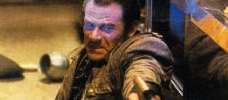
Trancers
1985 -
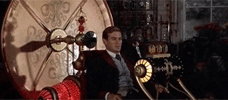
The Time Machine
1960 -

Groundhog Day
1993 -
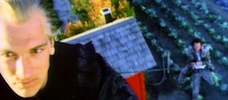
Warlock
1989 -

The Navigator
1988 -
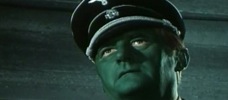
Tomorrow I’ll Wake Up and Scald Myself with Tea
1977 -
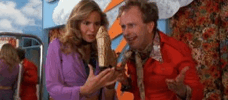
The Spirit of ‘76
1990 -
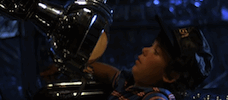
Flight of the Navigator
1986 -
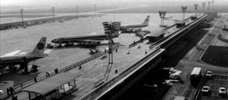
La jetée
1962 -
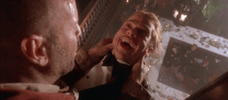
Twelve Monkeys
1995 -

Beastmaster 2: Through the Portal of Time
1991 -
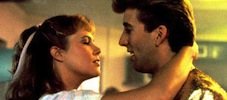
Peggy Sue Got Married
1986 -
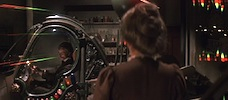
Time After Time
1979 -
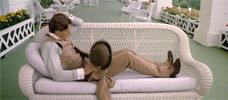
Somewhere in Time
1980 -
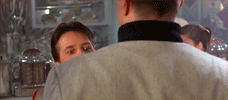
Back to the Future
1985 -
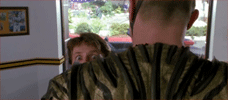
Back to the Future Part II
1989 -
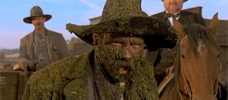
Back to the Future Part III
1990 -
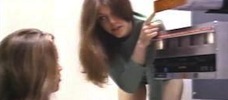
Idaho Transfer
1973 -
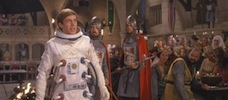
Unidentified Flying Oddball
1979 -
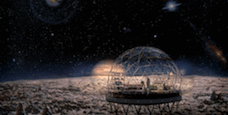
Slaughterhouse-Five
1972 -

The Lake House
2006 -
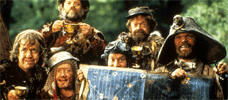
Time Bandits
1981 -
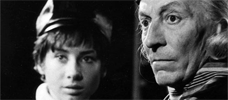
Doctor Who
1963–present -
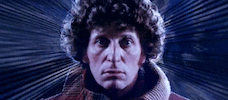
Doctor Who
1963–present
We don’t do comments anymore, but you may contact us here or find us on Twitter or Facebook.



